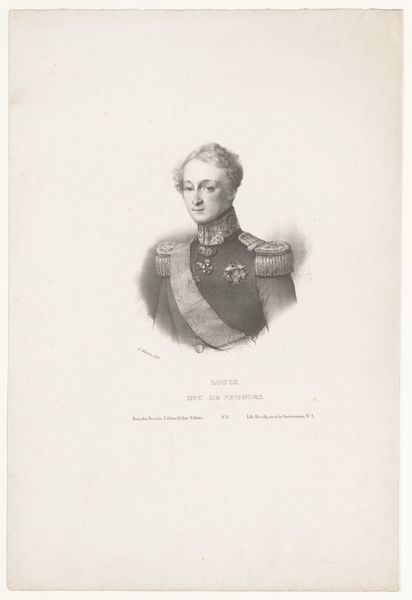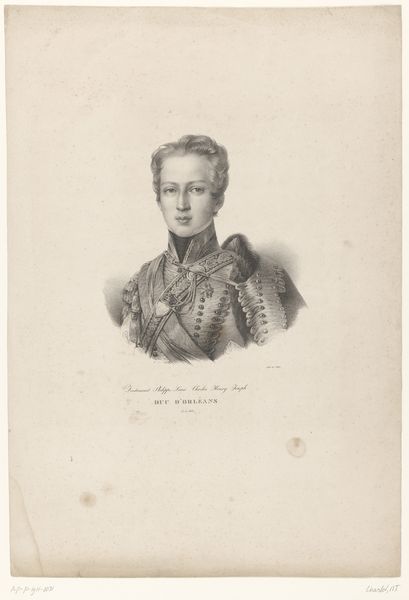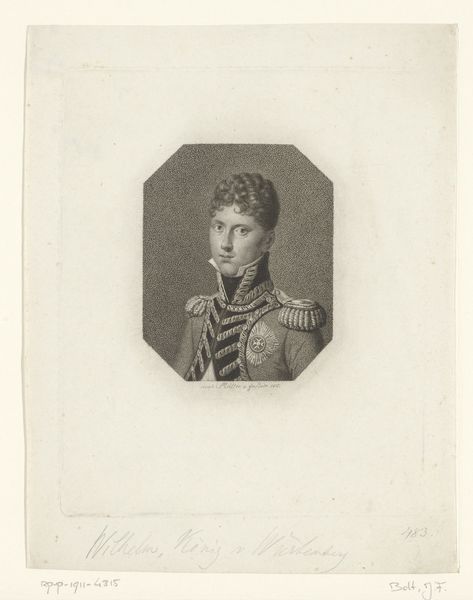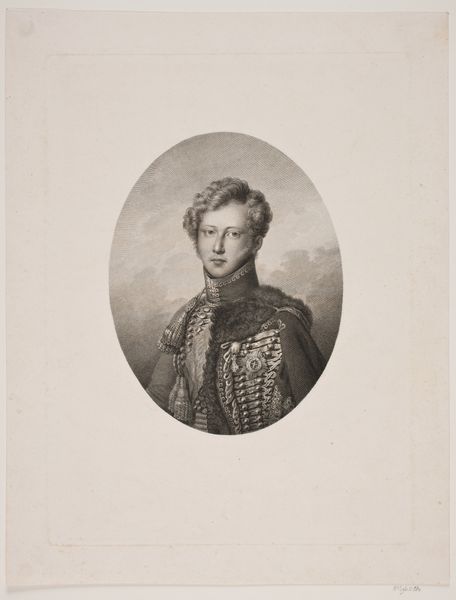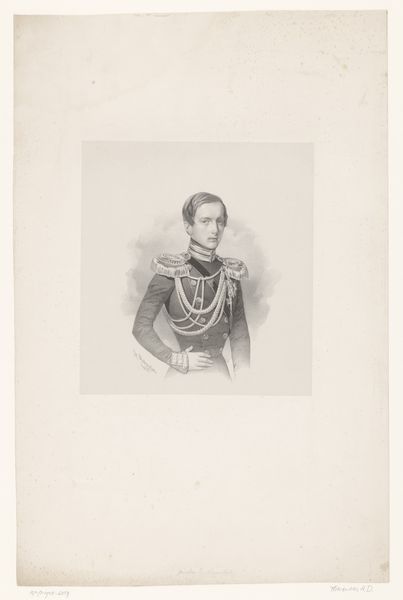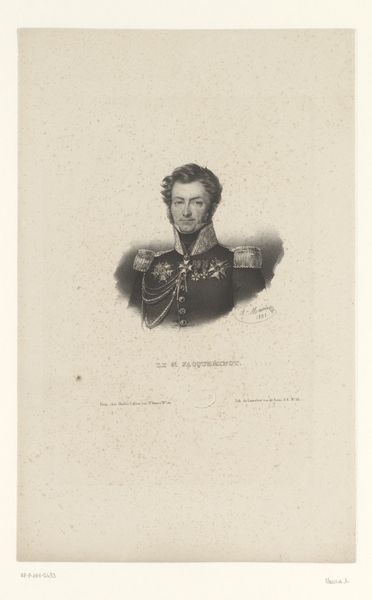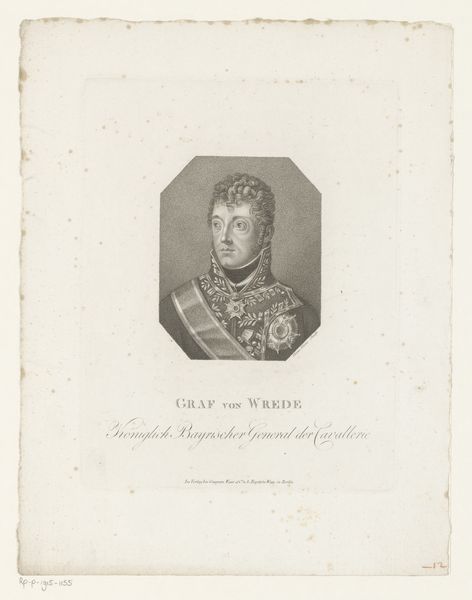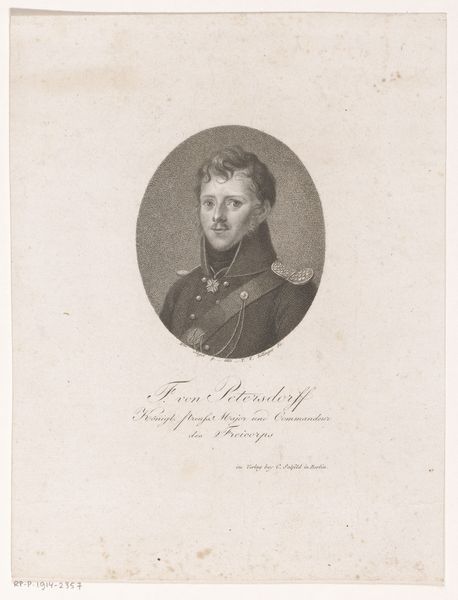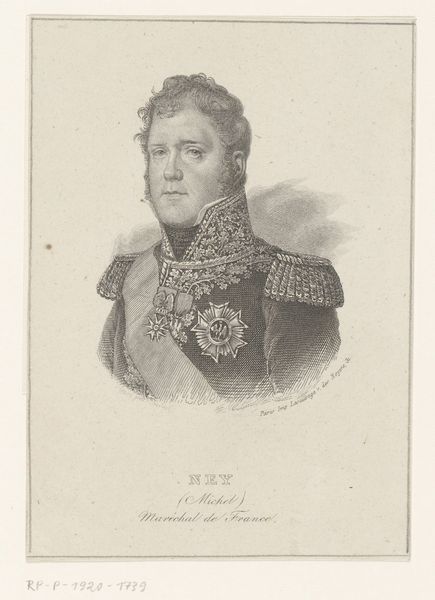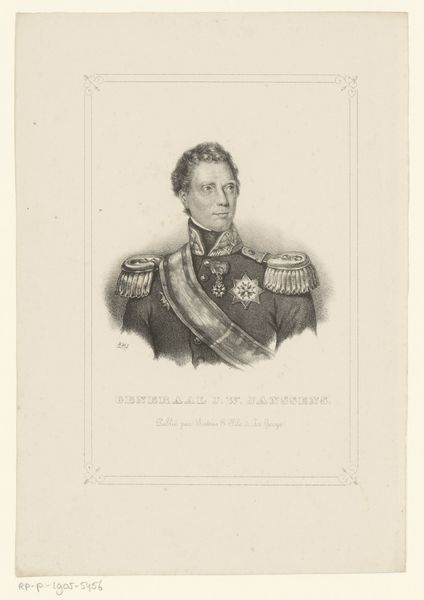
print, engraving
#
portrait
#
neoclacissism
# print
#
old engraving style
#
white palette
#
historical photography
#
history-painting
#
academic-art
#
engraving
Dimensions: height 262 mm, width 185 mm
Copyright: Rijks Museum: Open Domain
Editor: Here we have Jacques Sturm’s "Portret van Napoleon Frans Karel Jozef Bonaparte," created as an engraving in 1830. It’s a fairly straightforward portrait, but the young man’s almost weary expression is rather intriguing. What strikes you when you look at this, particularly given the social context it exists within? Curator: It is fascinating how portraiture functions to shape historical memory and reinforce power structures. Think about it: this is a portrait of Napoleon's son, made nearly two decades after his father's fall from power. By 1830, Napoleon's legacy was already fraught with political complexities. To what extent is this image intended as a purely aesthetic work, versus a statement about Bonapartism and dynastic ambition, regardless of its immediate irrelevance given the lack of position held by its sitter? Editor: That's a good point. The crisp lines and the neoclassical style feel almost like an attempt to legitimize his place in history despite the Bonapartes' misfortunes. Is it like a re-staging, giving the Bonapartes an intellectual stage instead of the imperial one that they’d previously possessed? Curator: Exactly! And consider the implications of the print medium itself. Engravings allow for wide distribution. This isn't some singular painting for a palace; it's a reproducible image intended for a broader audience. The intention is less about wealth, then, and more about message, a way to keep a potentially incendiary ideology circulating. To whose benefit, then? Are these images targeting people who miss Napoleon? Do you find a specific class being addressed through imagery like this? Editor: It makes you wonder who collected such prints and what purpose it served for them. I never considered the medium as a deliberate tool for shaping political discourse like this. Curator: Precisely! Looking at art as a social and historical artifact allows us to decipher those layers of intent and impact, shifting from just the aesthetic, but political implications of the object. Editor: That’s changed how I view these historical images. It's no longer just about the person depicted, but about who's doing the depicting, how it's distributed, and why.
Comments
No comments
Be the first to comment and join the conversation on the ultimate creative platform.
